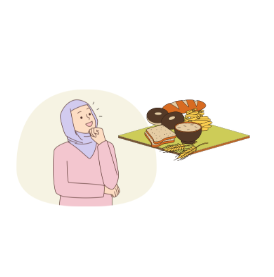Shifting toward a plant-based diet is one of the most meaningful steps you can take for your health, the environment, and animal welfare. Whether you’re aiming to eat less meat or fully embrace a plant-powered lifestyle, this beginner-friendly guide offers the foundational knowledge and tools to help you begin your journey with ease and confidence.
What Does “Plant-Based” Really Mean?
A plant-based diet centers around foods that come mainly from plants, including:
- Vegetables
- Fruits
- Whole grains
- Legumes (such as beans, lentils, and peas)
- Nuts and seeds
- Healthy plant oils (like olive and avocado oil)
Unlike vegan or vegetarian diets that may strictly exclude all animal products, a plant-based diet is flexible. Some people may continue to eat small amounts of eggs, dairy, or meat. The main idea is to make whole, minimally processed plant foods the core of your meals.
Why Choose a Plant-Based Diet?
1. Supports Heart Health
Plant-based foods naturally have less cholesterol and fatty fats, which means they can help lower your blood pressure and lower the risk of heart disease.
2. Aids Weight Control
Rich in fiber and low in calorie-dense processed foods, plant-based diets can assist in healthy weight loss or maintenance—without extreme restrictions.
3. Lowers Risk of Chronic Illness
Research shows that eating mostly plants may help prevent or manage:
- Type 2 diabetes
- Some forms of cancer
- Obesity
- Digestive issues
4. Improves Gut Health
Fiber feeds the beneficial bacteria in your gut, promoting stronger immunity, better digestion, and improved mood regulation.
5. Better for the Planet
Producing plant foods generally requires fewer natural resources and produces less pollution than animal-based foods.
Plant-Based Pantry Essentials
| Category | Examples | Quick Tip |
|---|---|---|
| Vegetables | Broccoli, carrots, spinach, kale, bell peppers | Eat a rainbow of veggies daily |
| Fruits | Apples, bananas, berries, mangoes, oranges | Choose fresh or frozen over juice |
| Whole Grains | Oats, brown rice, quinoa, millet, whole wheat | Opt for “100% whole grain” on the label |
| Legumes | Lentils, chickpeas, black beans, peas | Add to salads, stews, or wraps |
| Nuts & Seeds | Almonds, chia, flaxseed, sunflower seeds | Add to yogurt, cereal, or baking |
| Plant Proteins | Tofu, tempeh, seitan, edamame | Try grilled, baked, or stir-fried |
| Healthy Fats | Avocados, olive oil, nut butters | Use in moderation for flavor and fullness |
Busting Common Plant-Based Myths
Myth 1: You won’t get enough protein.
Reality: Legumes, tofu, tempeh, quinoa, and seeds offer ample plant protein to meet most people’s needs.
Myth 2: Plant-based eating is too expensive.
Reality: Staples like beans, rice, lentils, and frozen veggies are often cheaper than meat-based options.
Myth 3: It’s just salads and smoothies.
Reality: A plant-based diet can be rich and varied—think hearty curries, veggie burritos, whole-grain pasta, and more.
Sample One-Day Beginner Meal Plan
| Meal | What to Eat |
|---|---|
| Breakfast | Oatmeal with almond milk, banana, chia seeds, and peanut butter |
| Lunch | Lentil soup, whole-grain bread, and a fresh green salad |
| Snack | Apple slices with hummus or a handful of almonds |
| Dinner | Steamed broccoli, brown rice, and stir-fried tofu |
| Dessert | Crushed walnuts and cinnamon on top of a baked pear |
Smart Tips for a Smooth Transition
- Ease Into It
Start by swapping one or two meals a day with plant-based options and build from there. - Explore and Experiment
Try plant-based takes on your favorite meals—like bean tacos, veggie stir-fries, or lentil pasta. - Check Food Labels
Watch for added sugars, sodium, and artificial ingredients—even in “plant-based” packaged foods. - Consider Supplements
Important nutrients to track include vitamin B12, iron, vitamin D, and omega-3s. Fortified foods or supplements may help. - Keep It Balanced
A varied diet ensures you meet all your nutritional needs naturally.
Final Thoughts
Eating a plant-based diet is a healthy and empowering lifestyle choice, not just a fad. By focusing on real, nutrient-rich foods and making gradual, intentional changes, you can enjoy better health, a lighter environmental footprint, and a deeper connection to what’s on your plate.
All it takes is one plant-forward meal to begin. Step by step, choice by choice, you’re building a better way of eating—for yourself and the world around you.
